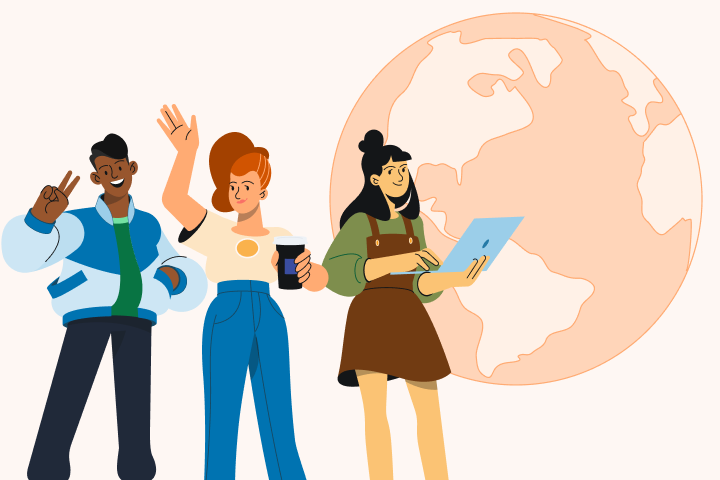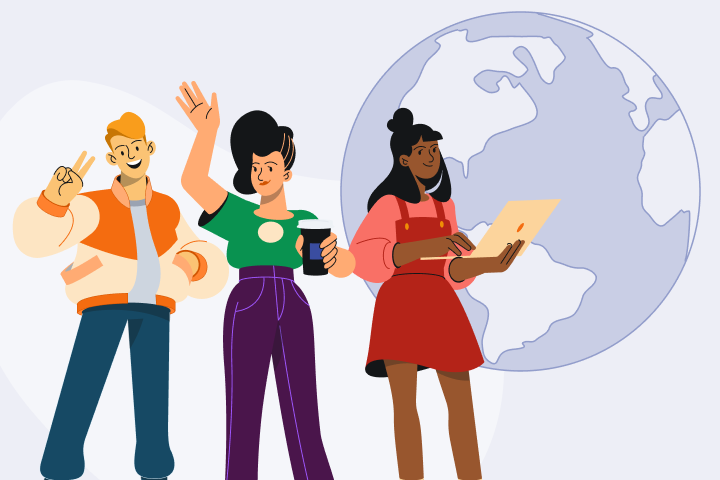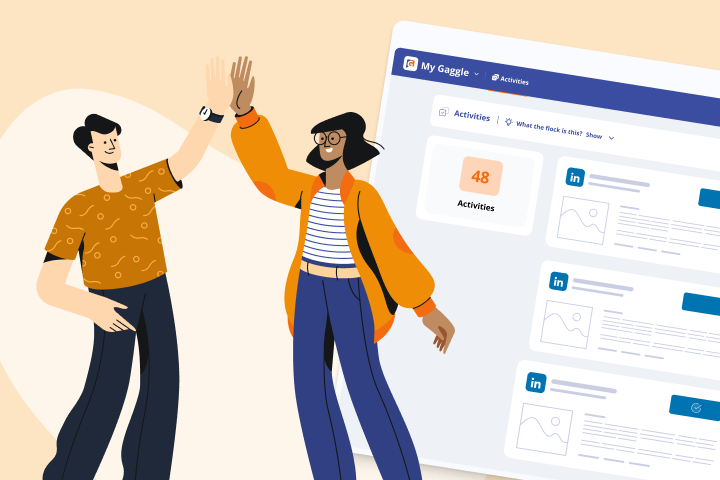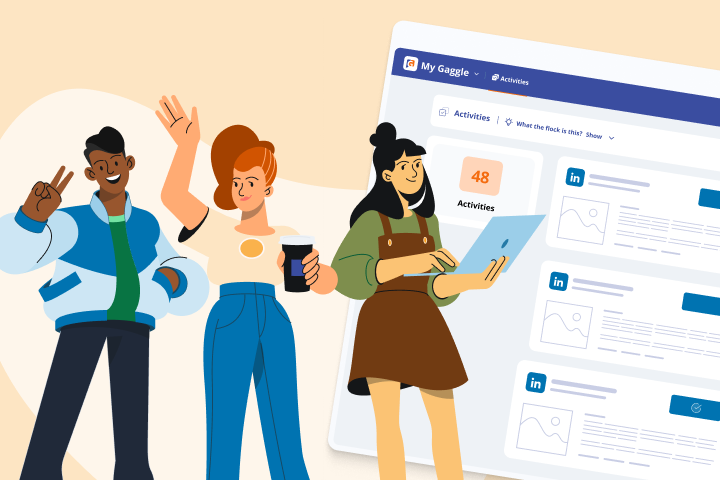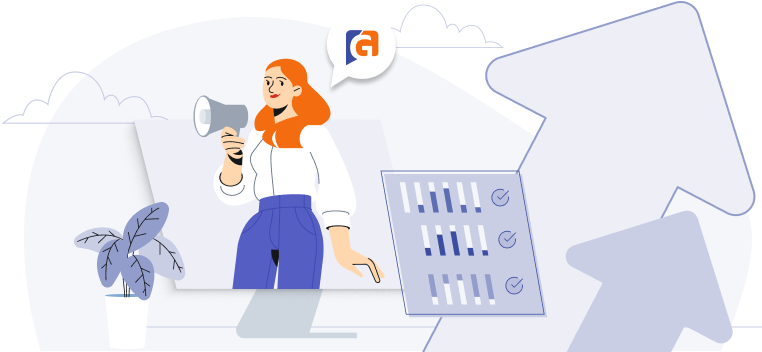Employee Engagement Examples That Actually Drive Results
Let’s make work worth remembering—unlike in Severance, no elevator descent is required
Employee engagement isn’t just an HR initiative—it’s the backbone of any organization’s culture, productivity, and brand reputation. For B2B companies especially, the impact of engaged employees stretches far beyond internal satisfaction—it directly influences LinkedIn visibility, sales participation in marketing, and overall brand credibility.
But here's the catch: strategies and surveys are easy to talk about. What professionals managing social and digital programs need are real examples that they can plug into their systems without adding hours to their week.
According to Gallup, companies with highly engaged workforces outperform their peers by 21% in profitability. But with many leaders still leaning on outdated tactics and superficial perks, the opportunity to drive employee engagement at scale is often missed. This guide fills that gap with actionable examples proven to work.
What Is Employee Engagement?
Employee engagement refers to the level of emotional commitment and discretionary effort an employee brings to their work and their organization. Think of it like a product launch campaign: if you build hype internally, your team will naturally advocate externally.

Or imagine a CRM adoption program. It only works if reps actually use it, see value, and trust it helps them hit goals. Engagement is no different—without emotional buy-in, behavior change won’t stick.
Why It Matters
When employees feel seen and supported, advocacy becomes a natural extension—not a mandate. The difference between quiet quitting and highly engaged employees often comes down to systems, not slogans.
Here’s why employee engagement is the cornerstone of effective brand advocacy:
-
Productivity: Engaged employees are more focused, proactive, and solution-oriented.
-
Retention: They’re more likely to stay, reducing recruitment and training costs.
-
Innovation: Engagement boosts collaboration and ideation.
-
Advocacy: Employees are more inclined to share company content, boosting organic reach.
-
Trust: Internally aligned teams reflect authenticity externally.
Real-World Examples of Employee Engagement That Work
Now that we’ve unpacked what employee engagement really means, it’s time to bring those concepts to life and the best way to move from theory to action is by learning from companies already doing it well.
The following are practical examples of employee engagement in companies that have scaled internal culture into external brand trust and prove that engagement isn't just about perks; it’s about creating systems that inspire employees to participate, share, and stay connected.
1. Google’s ‘20% Time’ for Passion Projects
Introduced in the early 2000s, Google allows employees to dedicate 20% of their time to personal passion projects. This has led to innovations like Gmail, AdSense and Google News. The initiative signals trust and autonomy—principles that drive deep engagement.
For B2B teams, offering one hour a week for employees to develop content, post on LinkedIn, or contribute to internal projects can yield similar ownership and innovation.
2. LinkedIn’s Surprise "LiftUp" Days (Summer Shutdown)

To tackle burnout during the height of the pandemic, LinkedIn gave all employees a week off to unplug—no Slack pings, no Zoom calls, and notably, this time off was not deducted from their PTO. It was and continues to be a preventive, not reactive, move to prioritize wellness and the need for a work-life balance in high-output teams.
In fast-moving marketing teams, a scaled-down version could be a surprise Friday off or a personal mental health day tied to advocacy participation.
3. Microsoft’s Gamified Learning and Sharing
Microsoft uses gamification internally, including badges and leaderboards, to boost learning. The company even developed a Teams-based Incentives app.
Marketers can apply the same approach by rewarding social engagement—and with GaggleAMP, built-in leaderboards and easy-to-trigger rewards make adoption feel effortless.
4. Salesforce’s 1-1-1 Philanthropy Model
Salesforce gives 1% of its equity, employee time, and product to philanthropic efforts. This model connects everyday tasks with a higher purpose.
Brands can support employee engagement by encouraging sharing around company values, ESG efforts, or CSR initiatives.
5. Starbucks’ Tuition Reimbursement + Stock
Starbucks offers tuition reimbursement and stock options even to part-time baristas. It’s a statement: your future matters here.
For enterprise teams, this can translate into showcasing professional development support—then enabling employees to advocate for those benefits externally.
6. Zoom's Integration of Workvivo for Enhanced Employee Engagement
To keep teams connected and engaged, Zoom integrated Workvivo, a digital employee experience platform, into its internal operations. The platform creates a social, community-driven space for employees to interact, celebrate wins, and stay informed, all within the tools they already use.
For B2B teams, this is a strong example of using technology not just for productivity, but to build emotional connection and reinforcing your company culture.
7. NVIDIA’s Inclusive Hiring

NVIDIA provides programs for diverse and nontraditional hires, including mentoring, shadowing, and leadership support.
Highlighting such efforts in internal and external content boosts employee pride and reinforces shared values.
8. Televerde’s Empowerment via Training
Televerde employs and trains incarcerated women in B2B sales roles. The result? High-performing teams with deep brand loyalty.
Internal L&D programs—when authentically shared—can do the same for engagement and advocacy.
9. Stryker’s Culture of Belonging and Growth
From active Employee Resource Groups like Stryker’s Women’s Network and Allies for All Abilities, to flexible work benefits and a focus on internal mobility, Stryker creates space for every employee to thrive.
For B2B teams, this is a masterclass in building belonging while encouraging internal advocacy—because when employees grow, they share that success outward.
10. Bosch’s Innovation-Led Thought Leadership Model
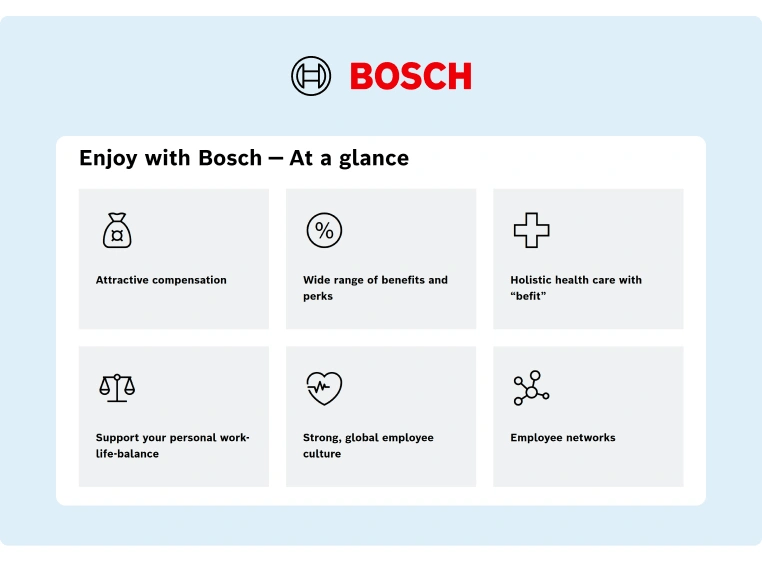
From workplace design to return-to-work integration management, Bosch prioritizes employee health and resilience, demonstrating a comprehensive and tailored approach to engagement.
Efforts like these connect individual contributions to the organization's mission, enhancing meaning at work.
What Makes These Engagement Tactics Effective?
When you examine examples of employee engagement in companies across different industries, you’ll notice four traits appear consistently:
-
Empowerment: Give employees ownership and choice.
-
Alignment: Connect their work to a bigger mission.
-
Recognition: Celebrate contributions publicly.
-
Enablement: Make it easy, fast, and integrated into workflows.
These aren’t perks—they’re systems. And they map directly to the needs of someone driving engagement across departments, without extra overhead.
How to Improve Engagement in a Scalable Way
Knowing that engagement drives meaningful business outcomes is only half the battle; implementing it in a way that fits your team’s workflow is the real challenge. So, what are examples of employee engagement that you can actually implement? Whether you're managing remote teams or aligning departments around brand goals, these are practical employee engagement initiatives that pave the way for scalable advocacy without breaking the bank:
Team Building That Feels Natural
Team-building doesn’t need to mean awkward trust falls. Think:
-
Cross-functional Slack trivia games that build camaraderie across team members.
-
Internal hackathons for product ideas
-
“Lunch Roulette” pairing employees for casual virtual lunches
Employee Recognition That Doesn’t Feel Performative

Recognition is fuel for engagement. Consider:
-
Peer-nominated awards based on company values
-
Public praise via Slack shoutouts or digital badges
-
Points-based rewards for consistent advocacy actions
Add Flexible, Purpose-Driven Options
-
Work-From-Anywhere Wednesdays: Reinforces trust and flexibility
-
Social Impact Days: Give time off to volunteer with causes employees care about
-
Internal storytelling: Encourage employees to share wins or personal milestones on internal channels
These small shifts compound over time and create a culture where advocacy becomes an extension of pride—not a forced action.
How GaggleAMP Turns Engagement into Scalable Brand Advocacy
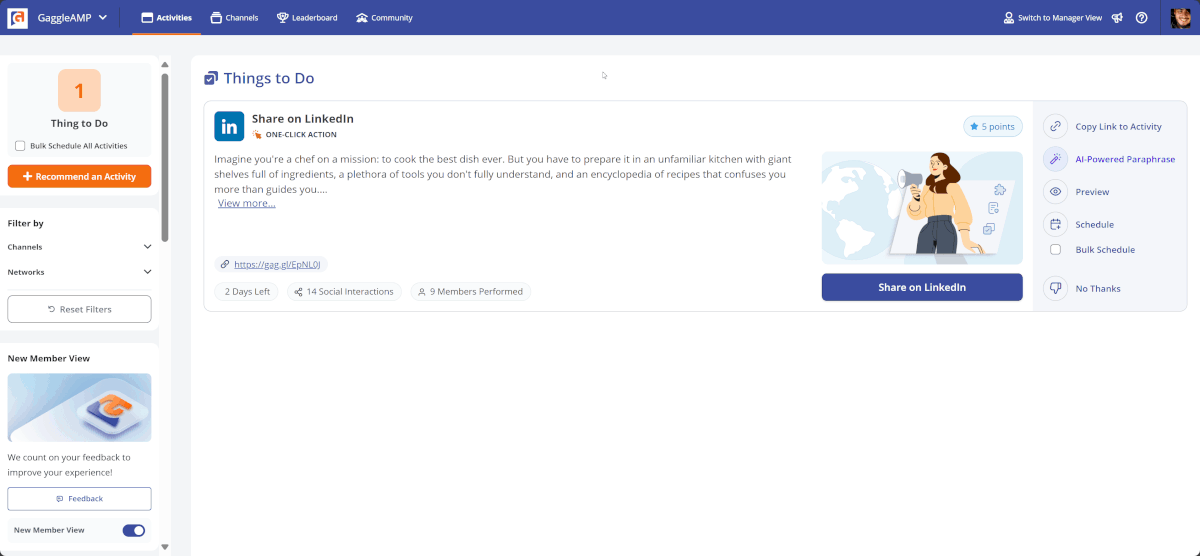
When engagement efforts fall flat, it's rarely due to lack of intent—it's because the execution is too manual, too fragmented, or just not compelling enough for employees. GaggleAMP addresses these roadblocks head-on with features designed to ease the workload, amplify participation, and deliver results that marketing and communications leaders can proudly share with the C-suite.
-
Seamless Workflow Integration: GaggleAMP lives inside tools your employees already use—like Slack and Microsoft Teams—so there's no need to switch tabs, remember passwords, or adopt new platforms. This removes friction and fits naturally into their day.
-
Gamification That Drives Behavior: GaggleAMP includes customizable leaderboards, points, and rewards. It turns participation into a friendly competition, making engagement consistent and fun without feeling forced.
-
Automated Content Delivery: Content is pushed directly to employees with simple engagement actions pre-configured. This transforms social sharing from a chore into a one-click task, reducing the burden on Sales, Executives, and subject matter experts.
-
Performance Visibility and ROI Reporting: Marketers need proof of impact. GaggleAMP provides detailed insights into who’s engaging, what content is performing, and how advocacy contributes to reach, traffic, and conversions. This data isn't just for bragging rights—it's ammunition to justify budget, retain buy-in, and validate your role.
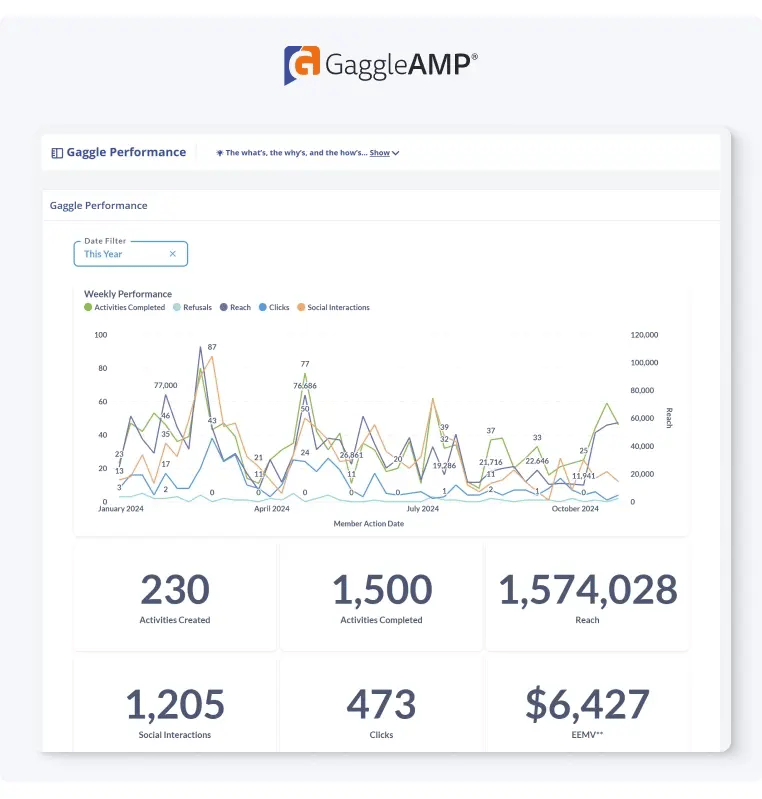
-
Storytelling Through Internal Campaigns: Launch campaigns that highlight company culture or community wins. Let employees amplify moments that matter—boosting morale internally and brand trust externally.
When your engagement platform removes barriers, meets people where they work, and adds a layer of recognition—participation becomes second nature.
Don’t Just Motivate Employees. Inspire Them to Act.
Engagement doesn’t start with motivation. It starts with systems that enable action—and with tools that make participation feel effortless rather than like another to-do.
If your team is still relying on manual Slack messages, spreadsheet tracking, or wishful thinking to boost employee engagement, it’s not just inefficient—it’s costing you visibility, credibility, and internal buy-in. Start small, choose the best example of employee engagement for your team, test it, and optimize your strategy.
Want to turn these ideas into action? GaggleAMP simplifies employee engagement and delivers measurable results within the first 90 days—stop chasing and start scaling. Sign up for a Demo today.






